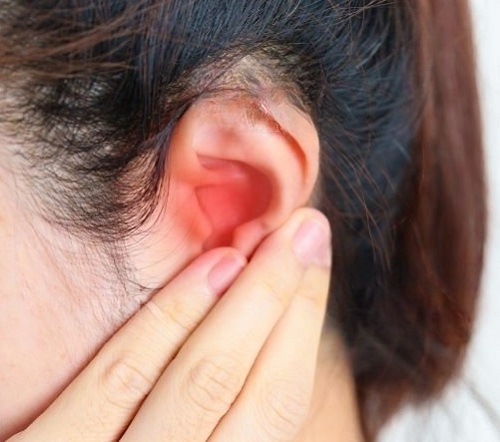Wondering What Side Should I Sleep on With a Ruptured Eardrum? This informative guide will answer all your doubts!
Dealing with a ruptured eardrum can be uncomfortable and concerning, especially regarding daily activities like sleep. Your sleep position can significantly impact your comfort and healing process. So, if you are concerned about—What Side Should I Sleep on With a Ruptured Eardrum? This comprehensive guide is all you need!
Discover the Benefits of Castor Oil for Ear Infections here
Understanding Ruptured Eardrums
A ruptured eardrum, also known as a tympanic membrane perforation, occurs when the thin tissue that separates the ear canal from the middle ear is torn or damaged. This can result from various factors, including infections, trauma, changes in pressure, or even inserting objects into the ear.
Signs of Trouble:
- Pain: You might feel a sharp pain in your ear or even a sudden relief from pain if the eardrum breaks after being stretched by infection.
- Hearing Loss: Sounds may seem more muffled or faint.
- Fluid Drainage: You might notice liquid or blood draining from your ear.
What Side Should I Sleep on with a Ruptured Eardrum?
1. Sleeping on the Opposite Side
If you have a ruptured eardrum, sleeping on the side opposite the affected ear is the best option. For example, if the rupture is in your left ear, you should try sleeping on your right side.
This position minimizes direct pressure on the damaged ear, reducing discomfort and potential irritation.
2. Sleeping on the Back
If both ears are affected or if you’re unsure which ear is ruptured, sleeping on your back can be an excellent option. Back sleeping distributes weight evenly and reduces the risk of putting pressure on either ear.
Tip: Use supportive pillows to keep the neck and head aligned.
3. Elevating Your Head
Raising the head aids in draining fluids from the ear and may prevent discharge from affecting sleep quality. Utilize an extra or specially designed wedge pillow for a gentle elevation.
Precautions and Tips
- Avoid Sleeping on the Affected Side: Always avoid sleeping on the side with the ruptured eardrum. Direct pressure on the damaged area can lead to discomfort and hinder the healing process.
- Use Pillows Wisely: If you choose to sleep on your back or the opposite side, arrange pillows to ensure your head is adequately elevated and supported. This promotes drainage and prevents unnecessary pressure on the affected ear.
- Consult a Medical Professional: Every individual’s condition can vary, and it’s essential to consult with a medical professional for personalized advice. They will provide specific recommendations based on the severity of your ruptured eardrum and overall health.
- Protect the Ear during Showering: Covering the ear with a waterproof material while showering can prevent further irritation.
- Avoid Inserting Objects: Refrain from inserting cotton swabs or other objects into the affected ear, which can exacerbate the problem.
Recovery and Healing
Recovery and healing from a ruptured eardrum typically take a few weeks to a couple of months, and while it often heals on its own, following the healthcare provider’s guidance is crucial. This includes sleeping comfortably to minimize discomfort, avoiding inserting objects into the ear, and keeping the ear dry to prevent infections.
Medical interventions may include prescribed antibiotic ear drops or, in rare cases, surgery. Regular check-ups, protecting the ear from loud noises, and exercising caution during physical activities contribute to a smooth recovery process.
Final Thoughts
Finding the right sleep position can make a significant difference in your comfort and healing when dealing with a ruptured eardrum. Remember to prioritize rest, follow your healthcare provider’s recommendations, and maintain good ear hygiene to support the healing process effectively.


